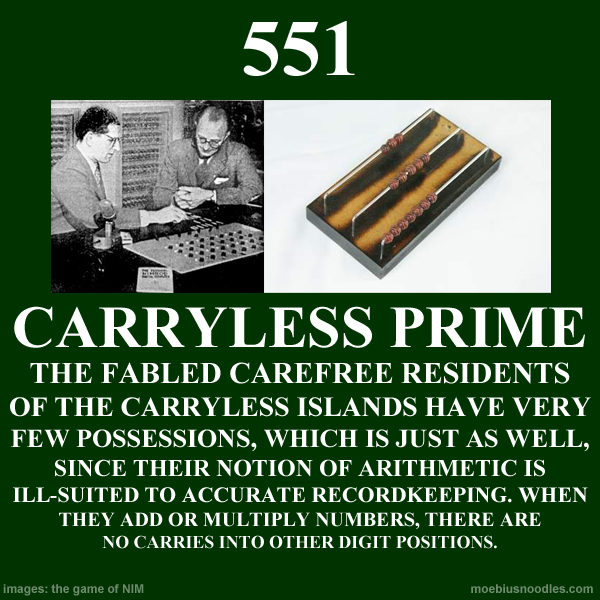BugFest, artistic lapware, Ask&Tell Hub: Newsletter August 30
I am Moby Snoodles, and this is my newsletter. I love to hear from you at moby@moebiusnoodles.com

Book news
We are crowd-translating Moebius Noodles into many languages. First, volunteers translate the text. Next comes copy editing. Then the layout, and publishing. The Persian translation is in the layout stage – hard to do because the text goes right-to-left. Hebrew, 45% translated, will have the same challenges. The Russian crew is now copy editing. If you would like to join the multi-lingual fun, write us or jump right in at the crowd-translating platform: http://crowdin.net/project/MoebiusNoodles
Three games from the book appeared on the local TV station blog as back-to-school activities: Real Multiplication Tables, Function Machines, and Fractal Art.
WOW! Multiplication course
The first few dozen people signed up and started the first task at the course hub. The two main goals are to help participants explore multiplication, and to jump-start casual local Math Circles. The course begins September 9th. More information about the course here: https://naturalmath.com/wowmultiplication/

Picture: two pages from the Moebius Noodles book.
Blogs and networks
Maria Droujkova and Yelena McManaman presented the “Baby algebra, toddler calculus” talk at the Homeschool Conference 2013. You can see the full recording or just the slides.
What do you think of mnemonics like PEMDAS? Discuss this and other questions at the Ask and Tell Hub! Yesterday, Susie wrote:
I am so glad to read this. I thought I might be obstinate by opposing using PEMDAS (made better by Please Excuse My Dear Aunt Sally???) instead of the reasoning – my thinking is the “tightness” of the bond of multiplication vs. addition and parentheses superseding the others. I am distressed at how often I see FOIL and SOH CAH TOA. I have had students I was tutoring or substituting object to me encouraging them to think without these. Thanks for the support!
Moebius Noodles will have a table at the North Carolina Museum of Natural Sciences BugFest, a huge celebration of arthropods. We call it Bugs in your Math. We will invite visitors to participate in hands-on exploration of math found in bugs, such as symmetry, tessellation, and fractals. Please email us if you will be there on September 21 and want to help, or if you have ideas for bugs in math (or math in bugs).

Once in a while, we greet a new fan of our Facebook Page with a card about number curiosities. Here is the card our 551st fan got, for example. I love this game, and I am learning a lot about numbers. Carryless? How playful!

From the #Lapware department, explore symmetry with your toddler through the Weave Silk app. I also use it myself to have a quiet, meditative break for a couple of minutes.

Sharing
You are welcome to share the contents of this newsletter online or in print. You can also remix and tweak anything as you wish, as long as you share your creations on the same terms. Please credit MoebiusNoodles.com
More formally, we distribute all Moebius Noodles content under the Creative Commons Attribution-NonCommercial-ShareAlike license: CC BY-NC-SA
Talk to you again on September 15th!
Moby Snoodles, aka Dr. Maria Droujkova
Posted in Newsletter
Multiplication course; functions and functionals; playful calculus – Newsletter August 15
I am Moby Snoodles, and this is my newsletter. I love to hear from you at moby@moebiusnoodles.com

WOW – Multiplication! An open online course for parents and teachers
To sign up or for more info, email moby@moebiusnoodles.com
Multiplication and division are areas where many kids lose their fight against dreary, rote methods of teaching mathematics. Most children who start to believe they aren’t good at math never recover enough to go into science, technology, or engineering fields. How can you change that for your kids and their friends?

In the first week of the course, we will discuss researcher-developed, parent-tested activities where multiplication is meaningful, beautiful, and fun. In the second week, you will gather your kids and their friends in a casual Math Circle, and then answer a few questions about the experience.
As with most of our courses, we have adapted the activities for all ages from toddlers to adults. Where young ones go on a scavenger hunt for pretty snowflakes and cool truck wheels, older kids build bridges from multiplication to symmetry, spatial transformations, and proportions.

WOW – Multiplication! is a pilot study for a citizen science project for mathematics education. By actively participating in the course, you help us learn what support parents and teachers need to start informal Math Circles, and how to adapt materials for each learner’s unique needs. We are excited to invite you to contribute to original scientific research!
We are starting the course on Monday, September 9. The course is for parents, teachers, and leaders of math playgroups and Math Circles with children of any age. The goal is to learn deep structures that are the foundation of multiplication – through quick games you can play for years.
You can expect to spend about two hours a week on the course, including reading, forum discussions, and activities with children. There will be optional live meetings online.
If this sounds like a course for you and yours, e-mail moby@moebiusnoodles.com
A young girl reinvents functionals
Katie and her adventurous mom are inventing functions, compositions of functions, and even functionals (functions of functions)!
A few days ago I introduced the concept of a function to Katie, and again the credit for the idea goes to Moebius Noodles, this time the book. Since I wanted Katie to right away think that functions are really cool, my first example was: girls can go in and princesses come out. Katie was in disbelief. ‘That doesn’t exist,’ she said. I told her that functions can be real or make believe.
One of the coolest aspects of math is making your own imaginary worlds. Pretend-play leads into mathematical “What if?” inventions:
My three favorites from her were: 1) boys go in and boys come out (the identity function!), 2) goats go in and sheep come out, sheep go in and goats come out, and 3) one function goes in and another one comes out.

Picture: two pages from the Moebius Noodles book.
Playful explorations inspired by calculus
We are starting to collect young calculus activities, at our Facebook page and at a math ed LinkedIn group we frequent. Our math ed friends have a lot of questions and fears about “calculus for five-year-olds” – and even more inspired ideas! Growth and toy roller-coasters for kids? Joseph Austin writes:
As for “teaching” differential equations to children, I would start with the “exponential growth” equation: y’ = ky. You could teach this with a game based on the “each one teach one” principle, doubling the number at each iteration.
Next, I’d introduce the concept of velocity and acceleration, that is, “speed” and “increasing speed”: “how fast is the car or bicycle or snowball speeding up as it rolls down the hill?” If you do it in reverse, you get Zeno’s paradox!
Tony Cron offers an interactive polygon limit exploration. See a similar idea at Guillermo Batista’s “Intuitive introduction to limits.”

Jeanie Clemmens has another idea about limits.
This is fun, thinking like a five year old and an adult math person at the same time. What if ten children divide one pie equally, then a hundred children, then a thousand divide the same pie equally. Children should see that the size of the pieces gets smaller and smaller approaching zero. Likewise, ten children returning their pieces to the pan, or a hundred, etc. never adds up to more than one pie, i.e. there is a limit both ways.
Share your young calculus ideas at our question and answer hub!
WRAL interview in the Go Ask Mom series

Sarah Hall wrote the story and made a short video clip of us talking about the Moebius Noodles book.
The two authors say collaboration between parents and kids is an important part of the process. They’d love to see math games and activities become a regular part of family life just like bedtime stories or playing catch. In many cases, they’ve heard from parents who say they’re learning right along with their kids as they play the games.
Sharing
You are welcome to share the contents of this newsletter online or in print. You can also remix and tweak anything as you wish, as long as you share your creations on the same terms. Please credit MoebiusNoodles.com
More formally, we distribute all Moebius Noodles content under the Creative Commons Attribution-NonCommercial-ShareAlike license: CC BY-NC-SA
Talk to you again on August 30th!
Moby Snoodles, aka Dr. Maria Droujkova
Posted in Newsletter
The mass movement of early math: Designing for behavior change
This week, I attended an O’Reilly webinar by Stephen Wendel about his upcoming book, Designing for Behavior Change. O’Relly’s staged publishing process is one of the inspirations for how we do things at Moebius Noodles. The feedback from the webinar will be incorporated into the next draft of the book.

We would like many, many, MANY families to do rich math with their kids. This problem is different from helping people to exercise or to manage personal finances (Stephen’s specialty at Hello Wallet). The difference is that most people already believe that some exercise or some attention to money are beneficial activities. Stephen had a good piece of advice for me. Here’s what he said.
Alright next question. This is nice! Maria asked: “How do we invite people to go where, quote, almost nobody has gone before?” Algebra for three-year-olds in this case, and other early advanced math. There’s almost no knowledge out there. There are a couple of interesting parts here: one part is almost nobody does it, and that’s a statistical fact, sure. But from an individual perspective it’s our local network that matters the most. That’s how we set our reference point: what’s normal. It’s called “descriptive norms”. Describing what’s normal in our environment. And so, hey, if someone is able to take an action, and have the ability, have the desire, you can help set the environment where this is a normal thing to do! Other smart kids like you. Other people who are advanced and have all this experience, and they’re doing it – that’s great. The fact that perhaps the average person, statistically, of the overall US population, doesn’t do it, that really doesn’t matter. What matters is: who do we look to for examples. To find that example is a mentally powerful technique. Descriptive norms; governor Rogers talked about this, in a political space it’s a widely used technique, and something we actually use at Hello Wallet as well.
This validates the main direction we are taking: supporting local Math Circles, math playgroups, learning coops, or simply groups of friends doing math together!
Here is the piece in voice.
Posted in Grow




